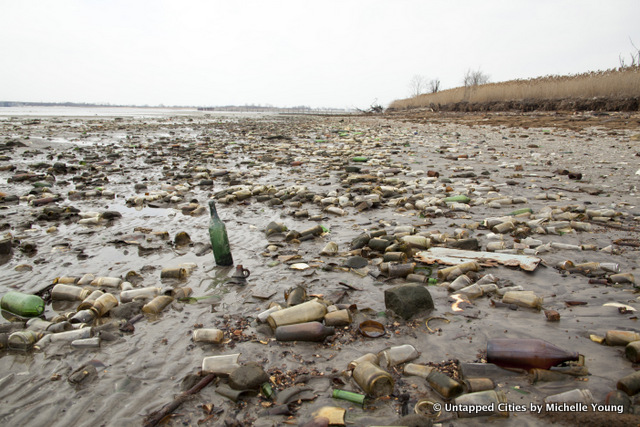
On a cold start to spring this past Saturday, over 20 explorers headed to an Untapped Cities tour of Dead Horse Bay in south Brooklyn with Will Ellis, author of Abandoned NYC to learn about the history of the area, as well as go antique hunting for bottles and other discarded materials. The landfill was in operation from the 1930s to 1940s, and as Will pointed out, even though the landfill was capped in 1953, erosion from each successive tide regularly eats away at the shoreline where you can see refuse waiting to be sifted out.
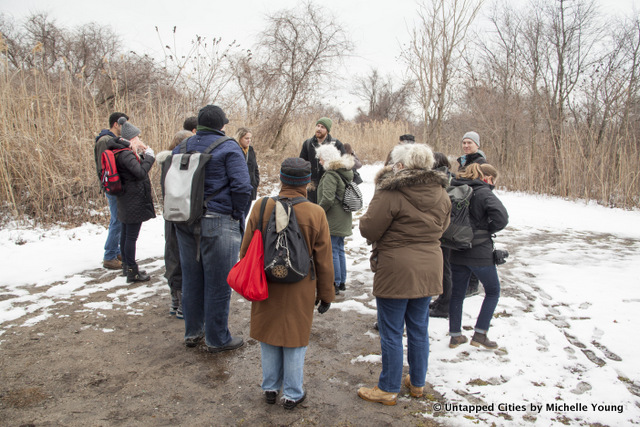
The tour began with a walk through a nature walk across from Floyd Bennett Field down to the beach on the Jamaica Bay side, with a view of the Marine Parkway Gil Hodges Bridge. On the way, Will spoke of the origin of this area, which began as an island known as Barren Island with a pirate history before it was filled in to become Floyd Bennett Field.
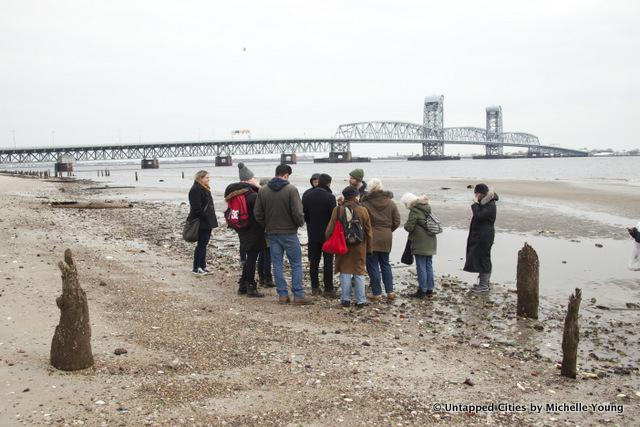
Join us for the next exploration of Dead Horse Bay with Will Ellis on May 2nd, 2015. Continue reading on for more photos: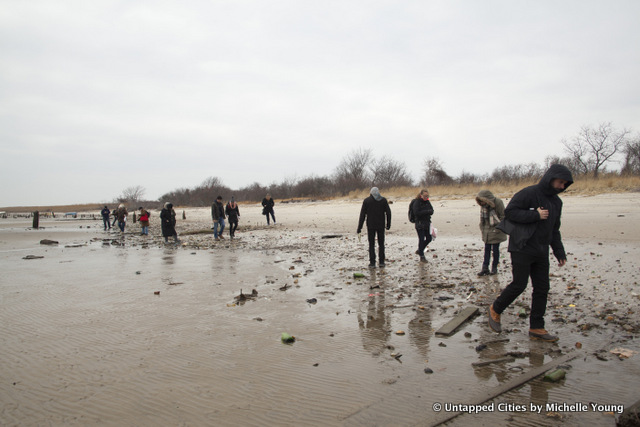
In 1859, the first horse rendering plants were constructed on Barren Island processing dead horses (how the beach gets its name) by mashing them up, steaming them, separating the products and boiling the bones down into glue. The remnants became commercial fertilizer. Originally, Barren Island was considered ideal for this noxious activity because it was so remote, nobody would complain about the smell.
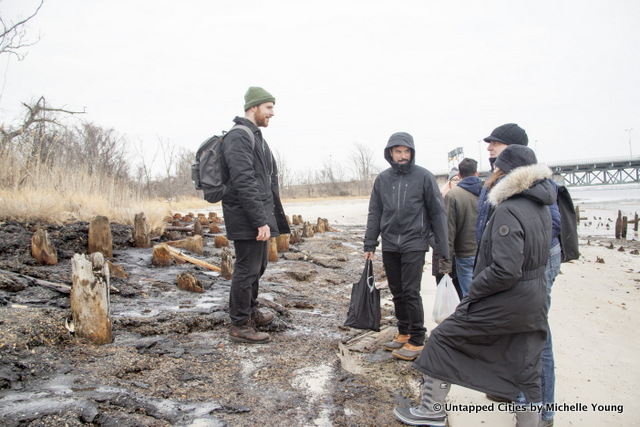
On the shore of the beach on the Jamaica Bay side, the remnants of foundations of a ferry terminal that once sent passengers back and forth to the Rockaways can be seen (and stood on). It was rendered obsolete with the construction of the bridge.
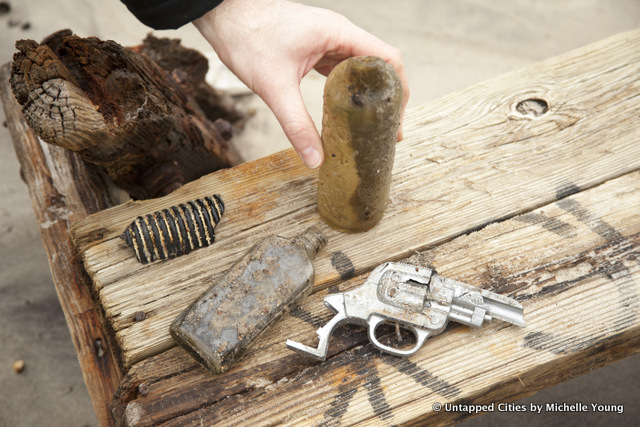
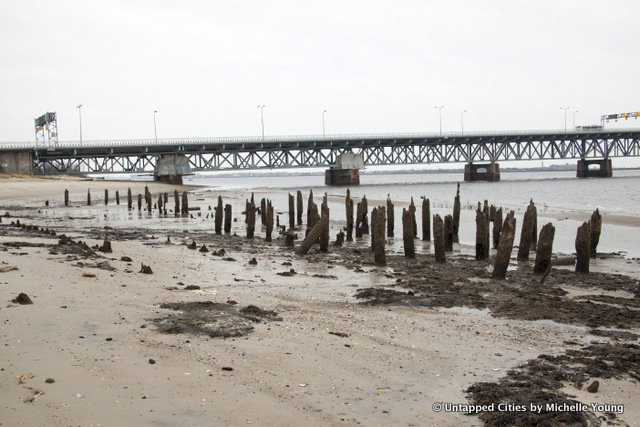
Like horses, which were once left to rot and decompose on city streets, garbage was once simply dumped into the waterways of the city. As Will tells us, the primary motivation for changing this “system” was financial, rather than environmental. The trash was starting to get in the way of ships, so the city paid the newly formed New York Sanitary Utilization Company to deal with the trash, which was cheaper than towing it out to sea. Once again, Barren Island was considered far enough from civilization to bother anyone from the smell.
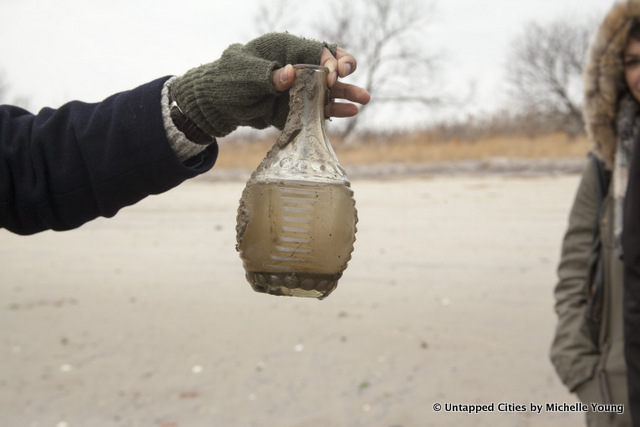
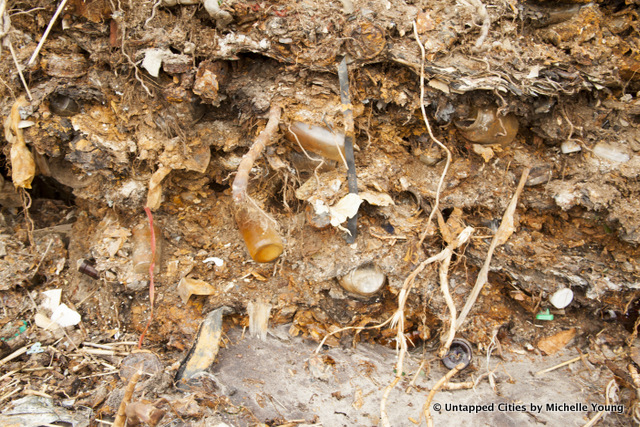
Bottles and other garbage embedded in the sediment along the shore Similar to the horses, the trash would be boiled and steam cooked until a layer of grease emerged at the top to be skimmed off and sold for industrial lubrication and soap. With encroaching development, even Barren Island became too close for comfort with the smell so bad at times. The stench would waft over to beach goers on Manhattan Beach where hotel evacuations would occur. The smell could reach a radius of 6 to 10 miles when the wind was right.
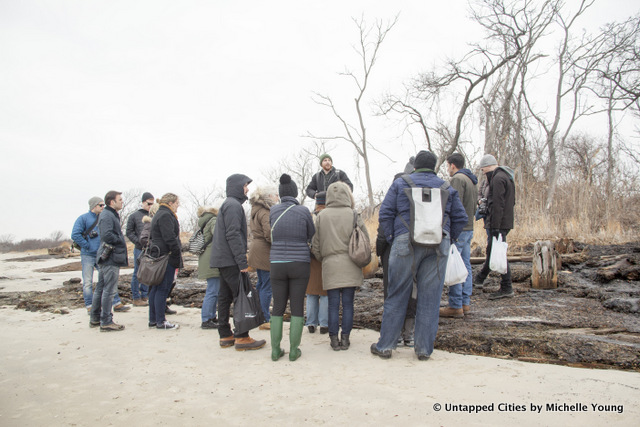
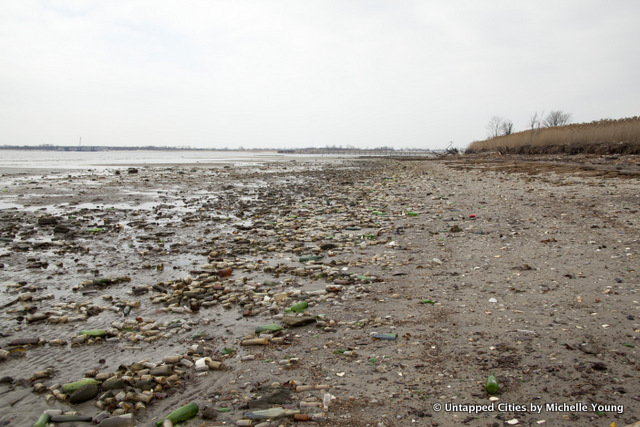
The early garbage plants went through 800 tons of garbage a day. Today, New York City generates 14 million tons of garbage and recyclables a year, a little over 38,000 tons per day. Though it doesn’t go into the waterways, it also doesn’t stay in New York City either. Once Freshkills Landfill closed, the garbage was trucked out to other states, a practice that continues today.
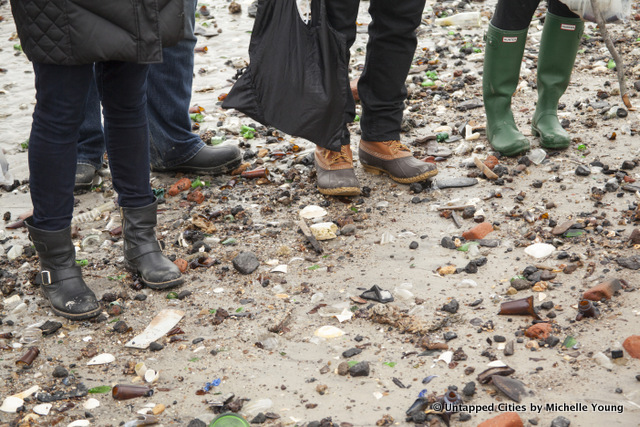
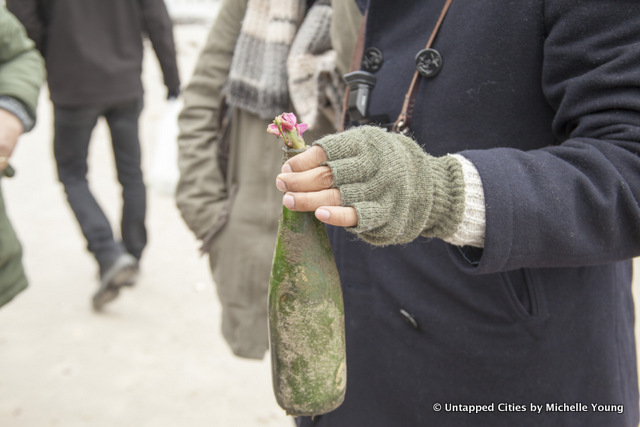
Unsurprisingly, neighboring communities began complaining and locals formed the Anti-Barren Island League. The landfill ceased operation in the 1940s and was capped off in 1953, but the waste emerges on a daily basis leaving a beach of strewn bottles, old toys, and shoes.
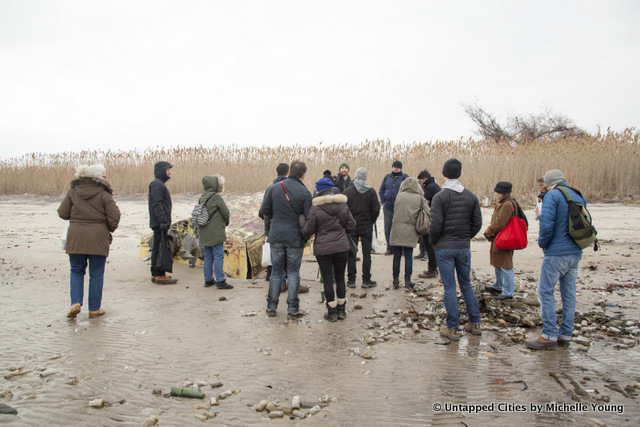
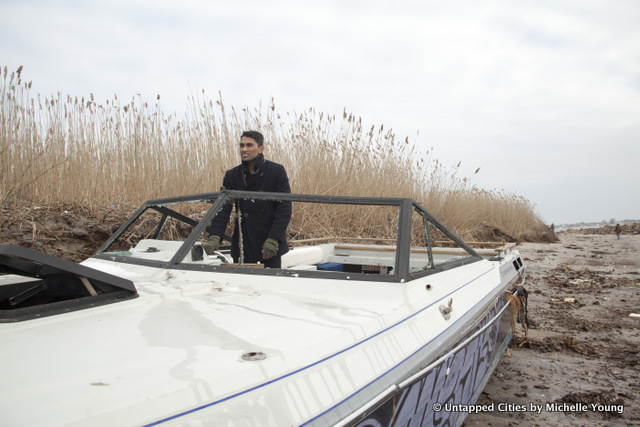 Abandoned boats dot the beach
Abandoned boats dot the beach
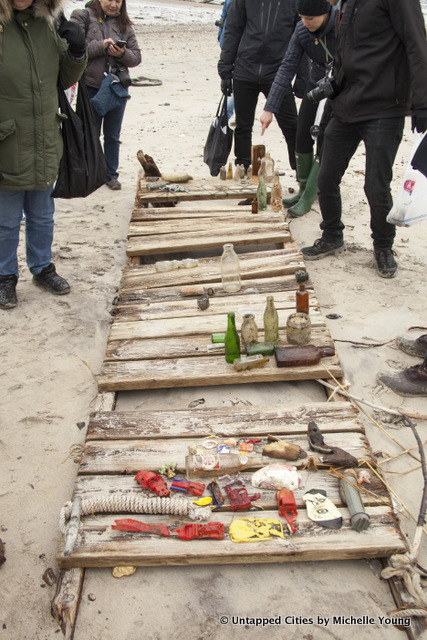
Sifting through the beach is a walk back in time: old Coca Cola bottles, medicine bottles, old nail polish bottles. Toy guns are a common find, along with dolls in separated body parts. The rare plastic bottle that has floated over forms an anachronistic, almost rude presence amongst the multi-colored bottles.
Get the book Abandoned NYC here. See a list of 20 abandoned places in NYC.





